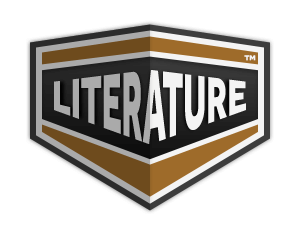On Approval
"On Approval" is a novella by Hector Hugh Munro, better known by his pen name, Saki. Set in Edwardian England, the story follows the entangled lives of two unconventional characters, a young woman named Beatrice and a wealthy suitor, who spend time together at a country estate. Combining elements of romance and satire, the narrative explores themes of societal expectations, the nature of relationships, and the quirks of human behavior. Saki's signature wit and sharp social commentary shine through as he crafts a tale that balances humor with a critical look at class and love.
Of all the genuine Bohemians who strayed from time to time into the would-be Bohemian circle of the Restaurant Nuremberg, Owl Street, Soho, none was more interesting and more elusive than Gebhard Knopfschrank. He had no friends, and though he treated all the restaurant frequenters as acquaintances he never seemed to wish to carry the acquaintanceship beyond the door that led into Owl Street and the outer world. He dealt with them all rather as a market woman might deal with chance passers-by, exhibiting her wares and chattering about the weather and the slackness of business, occasionally about rheumatism, but never showing a desire to penetrate into their daily lives or to dissect their ambitions. He was understood to belong to a family of peasant farmers, somewhere in Pomerania; some two years ago, according to all that was known of him, he had abandoned the labours and responsibilities of swine tending and goose rearing to try his fortune as an artist in London. “Why London and not Paris or Munich?” he had been asked by the curious. Well, there was a ship that left Stolpmünde for London twice a month, that carried few passengers, but carried them cheaply; the railway fares to Munich or Paris were not cheap. Thus it was that he came to select London as the scene of his great adventure. The question that had long and seriously agitated the frequenters of the Nuremberg was whether this goose-boy migrant was really a soul-driven genius, spreading his wings to the light, or merely an enterprising young man who fancied he could paint and was pardonably anxious to escape from the monotony of rye bread diet and the sandy, swine-bestrewn plains of Pomerania. There was reasonable ground for doubt and caution; the artistic groups that foregathered at the little restaurant contained so many young women with short hair and so many young men with long hair, who supposed themselves to be abnormally gifted in the domain of music, poetry, painting, or stagecraft, with little or nothing to support the supposition, that a self-announced genius of any sort in their midst was inevitably suspect. On the other hand, there was the ever-imminent danger of entertaining, and snubbing, an angel unawares. There had been the lamentable case of Sledonti, the dramatic poet, who had been belittled and cold-shouldered in the Owl Street hall of judgment, and had been afterwards hailed as a master singer by the Grand Duke Constantine Constantinovitch—“the most educated of the Romanoffs,” according to Sylvia Strubble, who spoke rather as one who knew every individual member of the Russian imperial family; as a matter of fact, she knew a newspaper correspondent, a young man who ate bortsch with the air of having invented it. Sledonti’s “Poems of Death and Passion” were now being sold by the thousand in seven European languages, and were about to be translated into Syrian, a circumstance which made the discerning critics of the Nuremberg rather shy of maturing their future judgments too rapidly and too irrevocably. As regards Knopfschrank’s work, they did not lack opportunity for inspecting and appraising it. However resolutely he might hold himself aloof from the social life of his restaurant acquaintances, he was not minded to hide his artistic performances from their inquiring gaze. Every evening, or nearly every evening, at about seven o’clock, he would make his appearance, sit himself down at his accustomed table, throw a bulky black portfolio on to the chair opposite him, nod round indiscriminately at his fellow-guests, and commence the serious business of eating and drinking. When the coffee stage was reached he would light a cigarette, draw the portfolio over to him, and begin to rummage among its contents. With slow deliberation he would select a few of his more recent studies and sketches, and silently pass them round from table to table, paying especial attention to any new diners who might be present. On the back of each sketch was marked in plain figures the announcement “Price ten shillings.” If his work was not obviously stamped with the hall-mark of genius, at any rate it was remarkable for its choice of an unusual and unvarying theme. His pictures always represented some well-known street or public place in London, fallen into decay and denuded of its human population, in the place of which there roamed a wild fauna, which, from its wealth of exotic species, must have originally escaped from Zoological Gardens and travelling beast shows. “Giraffes drinking at the fountain pools, Trafalgar Square,” was one of the most notable and characteristic of his studies, while even more sensational was the gruesome picture of “Vultures attacking dying camel in Upper Berkeley Street.” There were also photographs of the large canvas on which he had been engaged for some months, and which he was now endeavouring to sell to some enterprising dealer or adventurous amateur. The subject was “Hyænas asleep in Euston Station,” a composition that left nothing to be desired in the way of suggesting unfathomed depths of desolation. “Of course it may be immensely clever, it may be something epoch-making in the realm of art,” said Sylvia Strubble to her own particular circle of listeners, “but, on the other hand, it may be merely mad. One mustn’t pay too much attention to the commercial aspect of the case, of course, but still, if some dealer would make a bid for that hyæna picture, or even for some of the sketches, we should know better how to place the man and his work.” “We may all be cursing ourselves one of these days,” said Mrs. Nougat-Jones, “for not having bought up his entire portfolio of sketches. At the same time, when there is so much real talent going about, one does not feel like planking down ten shillings for what looks like a bit of whimsical oddity. Now that picture that he showed us last week, ‘Sand-grouse roosting on the Albert Memorial,’ was very impressive, and of course I could see there was good workmanship in it and breadth of treatment; but it didn’t in the least convey the Albert Memorial to me, and Sir James Beanquest tells me that sand-grouse don’t roost, they sleep on the ground.” Whatever talent or genius the Pomeranian artist might possess, it certainly failed to receive commercial sanction. The portfolio remained bulky with unsold sketches, and the “Euston Siesta,” as the wits of the Nuremberg nicknamed the large canvas, was still in the market. The outward and visible signs of financial embarrassment began to be noticeable; the half-bottle of cheap claret at dinner-time gave way to a small glass of lager, and this in turn was displaced by water. The one-and-sixpenny set dinner receded from an everyday event to a Sunday extravagance; on ordinary days the artist contented himself with a sevenpenny omelette and some bread and cheese, and there were evenings when he did not put in an appearance at all. On the rare occasions when he spoke of his own affairs it was observed that he began to talk more
Translation
Translate and read this book in other languages:
Select another language:
- - Select -
- 简体中文 (Chinese - Simplified)
- 繁體中文 (Chinese - Traditional)
- Español (Spanish)
- Esperanto (Esperanto)
- 日本語 (Japanese)
- Português (Portuguese)
- Deutsch (German)
- العربية (Arabic)
- Français (French)
- Русский (Russian)
- ಕನ್ನಡ (Kannada)
- 한국어 (Korean)
- עברית (Hebrew)
- Gaeilge (Irish)
- Українська (Ukrainian)
- اردو (Urdu)
- Magyar (Hungarian)
- मानक हिन्दी (Hindi)
- Indonesia (Indonesian)
- Italiano (Italian)
- தமிழ் (Tamil)
- Türkçe (Turkish)
- తెలుగు (Telugu)
- ภาษาไทย (Thai)
- Tiếng Việt (Vietnamese)
- Čeština (Czech)
- Polski (Polish)
- Bahasa Indonesia (Indonesian)
- Românește (Romanian)
- Nederlands (Dutch)
- Ελληνικά (Greek)
- Latinum (Latin)
- Svenska (Swedish)
- Dansk (Danish)
- Suomi (Finnish)
- فارسی (Persian)
- ייִדיש (Yiddish)
- հայերեն (Armenian)
- Norsk (Norwegian)
- English (English)
Citation
Use the citation below to add this book to your bibliography:
Style:MLAChicagoAPA
"On Approval Books." Literature.com. STANDS4 LLC, 2025. Web. 22 Feb. 2025. <https://www.literature.com/book/on_approval_4613>.








Discuss this On Approval book with the community:
Report Comment
We're doing our best to make sure our content is useful, accurate and safe.
If by any chance you spot an inappropriate comment while navigating through our website please use this form to let us know, and we'll take care of it shortly.
Attachment
You need to be logged in to favorite.
Log In